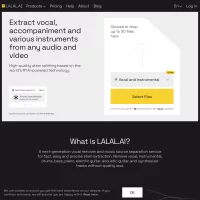Stay Ahead of the Curve
Latest AI news, expert analysis, bold opinions, and key trends — delivered to your inbox.
Sesame Releases Base AI Model Behind Viral Voice Assistant Maya
2 min read AI startup Sesame has open-sourced CSM-1B, the base model behind its hyper-realistic voice assistant, Maya, under an Apache 2.0 license, enabling commercial use with few restrictions. The 1-billion parameter model generates RVQ audio codes and is built on Meta’s Llama with an audio decoder. While available on Hugging Face & GitHub, it lacks safeguards against misuse, raising concerns about voice cloning, fake news, and deepfakes. Additionally, its non-English capabilities are limited due to data contamination. The release sparks debate on ethical AI use and potential abuse risks in AI voice synthesis. March 14, 2025 13:18
AI startup Sesame has open-sourced the base model behind Maya, its hyper-realistic virtual assistant, under an Apache 2.0 license, allowing commercial use with minimal restrictions.
Key Details
✅ CSM-1B Model – A 1-billion parameter AI model that generates RVQ (residual vector quantization) audio codes from text and audio inputs.
✅ Meta’s Influence – Built on Meta’s Llama model with an audio decoder component.
✅ Open-Source & Commercial Use – Available on Hugging Face & GitHub, but lacks robust safeguards against misuse.
✅ Limited Non-English Capabilities – Due to data contamination during training, but not fine-tuned for multilingual support.
✅ Ethical Concerns – No strong restrictions on voice cloning, fake news, or harmful uses, relying instead on an honor system.
With AI voice synthesis growing rapidly, CSM-1B’s release raises questions about ethical AI use and the potential risks of deepfake technology.



















 AI Agents
AI Agents